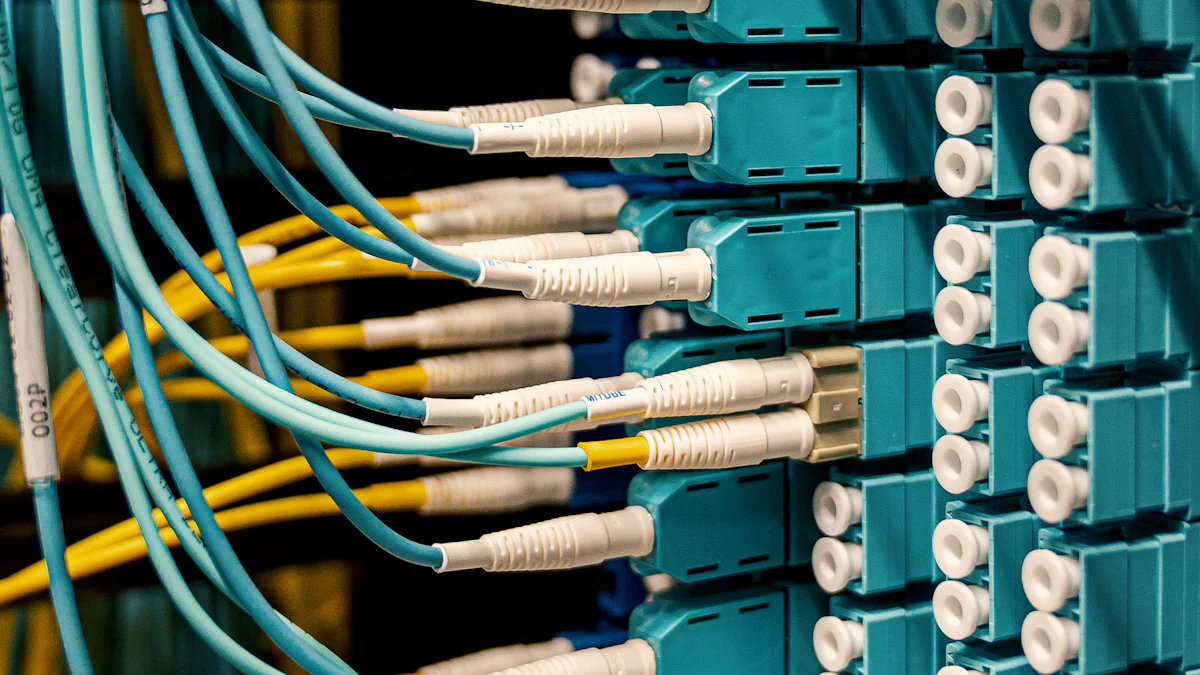Efficiently Managing and Distributing Optical Cables: A Fiber Distribution Box How-To Guide
Introduction to Fiber Distribution Boxes
Fiber distribution boxes play a crucial role in network management, providing a centralized and protected access point for optical cables. Distribution boxes are especially essential for FTTH networks, where they enable the efficient connection and management of optical fibers from a central location to individual homes or businesses. These boxes ensure that the optical cables are organized and protected, minimizing the risk of damage and signal loss.
My first encounter with a fiber distribution box was both challenging and enlightening. I faced difficulties in understanding the intricate layout of the cables within the box and struggled with managing their connections effectively. However, through research and hands-on experience, I found practical solutions to these challenges. By learning about proper cable organization techniques and understanding the functionalities of different components within the box, I was able to overcome these initial hurdles.
Understanding the Basics of Optical Cables and Their Needs
When it comes to understanding optical cables, it's essential to grasp the anatomy of these crucial components. An optical cable consists of three primary parts: the core, the cladding, and the protective sheath.
The core is at the center of the optical cable and serves as the pathway for transmitting light signals. Surrounding the core is the cladding, which has a lower refractive index than the core, enabling total internal reflection to occur within the core. Lastly, the protective sheath encases the core and cladding, providing insulation and protection from external environmental factors.
Proper distribution of optical cables is vital for maintaining network integrity and performance. By ensuring that optical cables are distributed effectively, we can minimize signal loss and reduce the risk of physical damage. Additionally, efficient distribution plays a significant role in ensuring scalability and flexibility in network design.
In a network environment, inadequate distribution can lead to signal degradation over long distances or when passing through multiple connection points. This can result in data loss or reduced transmission speeds. Furthermore, without proper distribution, network expansion or reconfiguration becomes challenging, limiting scalability and flexibility in adapting to changing demands.
To address these needs effectively, fiber distribution boxes provide a centralized solution for organizing and managing optical cables. These boxes not only protect and secure optical fibers but also facilitate their efficient distribution throughout a network infrastructure.
Setting Up Your Fiber Distribution Box

Now that we understand the importance of fiber distribution boxes in network management, it's crucial to know how to set them up effectively. Choosing the right fiber distribution box is the first step in ensuring efficient cable management and distribution within a network.
Choosing the Right Fiber Distribution Box
When selecting a fiber distribution box, several considerations come into play. Firstly, capacity and compatibility are essential factors to evaluate. The box should have sufficient capacity to accommodate the expected volume of optical cables while being compatible with the specific network infrastructure requirements.
Additionally, it's important to determine whether an indoor or outdoor box is more suitable for the intended application. Indoor boxes are designed for controlled environments, offering protection against dust and other indoor pollutants. On the other hand, outdoor boxes are built to withstand harsh weather conditions and provide enhanced protection against moisture and temperature fluctuations.
Step-by-Step Installation Guide
Once you've chosen the appropriate fiber distribution box, it's time to proceed with the installation process. Here's a step-by-step guide to help you set up your fiber distribution box seamlessly:
Preparing Your Optical Cables
Before installing the fiber distribution box, ensure that your optical cables are properly prepared for connection. This includes carefully inspecting each cable for any signs of damage or wear and cleaning their connectors to guarantee optimal performance.
Connecting and Managing Cables Within the Box
Begin by organizing and connecting the optical cables within the box according to their designated ports or slots. Proper cable management is crucial at this stage to avoid tangling or bending, which can lead to signal loss or damage. Ensure that each cable is securely connected and appropriately routed within the box for efficient distribution throughout the network.
By following these installation steps diligently, you can establish a robust foundation for managing and distributing optical cables effectively using a fiber distribution box.
Best Practices for Efficient Cable Management
Regular Maintenance and Inspection
Maintaining a fiber distribution box involves regular upkeep and thorough inspection to ensure optimal performance. Start by cleaning the box and checking for any signs of wear or damage. Dust and debris can accumulate over time, potentially affecting the connections and overall functionality. Additionally, inspect the components for any wear or corrosion, as these issues can lead to signal degradation. Updating and upgrading components as needed is crucial for keeping the box in top condition. By replacing outdated parts or enhancing existing features, you can improve the efficiency and longevity of the distribution box.
Tips for Optimizing Cable Distribution
Efficient cable distribution relies on strategic practices that enhance organization and accessibility. Labeling each cable with clear identifiers simplifies troubleshooting and maintenance tasks, promoting efficient management. Furthermore, utilizing protective sheaths and cable organizers safeguards the cables from environmental hazards while maintaining a tidy layout within the distribution box. These measures not only protect the cables but also contribute to streamlined maintenance procedures.
See Also
Crucial Handbook for Outdoor Fiber Optic Splicing Boxes
Becoming an Expert in FTTR Nylon Cable Application
Vital Tips for Outdoor FTTX Fiber Optic Termination Box Maintenance
Top 5 Characteristics of Rack-Mounted ODF for Fiber Optics
The Indispensable Handbook for Outdoor Armored Fiber Optic Cables


